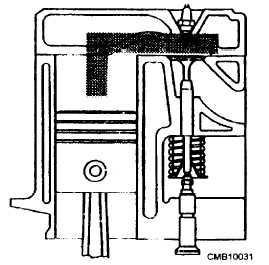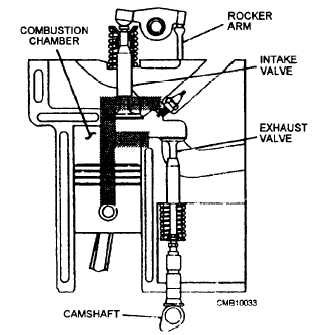HORIZONTAL OPPOSED - This engine is designed to fit into compartments where height is a consideration. It is used for air-cooled configurations.
RADIAL - This engine is designed almost exclusively for an aircraft engine.
The cylinders are numbered. The cylinder nearest the front of an in-line engine is number 1. The others are numbered 2, 3, 4, and so on, from front to rear. In V-type engines, the numbering sequence varies by manufacturer. You should always consult the manufacturer's manual for the correct order.
The FIRING ORDER (which is different from the NUMBERING ORDER) of the cylinders of most engines is stamped on the cylinder block or on the manufacturer's nameplate. If you are unable to locate the firing order and no operation or instruction manual is available, turn the engine over by the crankshaft and watch the order in which the intake valves open.
ARRANGEMENT OF VALVES
The majority of internal combustion engines also are classified according to the position and arrangement of the intake and exhaust valves, whether the valves are located in the cylinder head or cylinder block. The following are types of valve arrangements with which you may come in contact:
L-HEAD (fig. 2-11) - The intake and the exhaust valves are both located on the same side of the piston and cylinder. The valve operating mechanism is located directly below the valves, and one camshaft actuates both the intake and the exhaust valves.

Figure 2-11. - L-head engine.

Figure 2-12. - I-head engine.
I-HEAD (fig. 2-12) - The intake and the exhaust valves are both mounted in a cylinder head directly above the cylinder. This arrangement requires a tappet, a pushrod, and a rocker arm above the cylinder to reverse the direction of valve movement. Although this configuration is the most popular for current gasoline and diesel engines, it is rapidly being superseded by the overhead camshaft.
F-HEAD (fig. 2-13) - The intake valves are normally located in the head, while the exhaust

Figure 2-13. - F-head engine.
Continue Reading